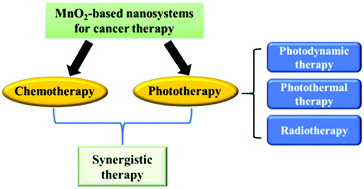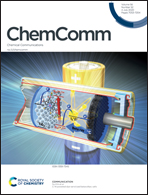MnO2-Based nanosystems for cancer therapy
Abstract
Cancer is one of the most dangerous diseases worldwide, the treatment of which is still a great problem. The increasing demand of clinical biomedicine and fast development of nanotechnology have quickly promoted the generation of diverse nanosystems for various cancer therapies. As one kind of redox active transition-metal dioxide nanomaterials, manganese dioxide (MnO2) and its nanocomposites have emerged as a novel class of nanomaterials that show superior advantages and unprecedented performances in cancer therapy due to their large surface area, good absorption and degradation ability, strong fluorescence quenching ability, high oxidation and catalytic activity, etc. According to different morphologies of MnO2, MnO2 can be divided into MnO2 nanosheets, MnO2 quantum dots (QDs), MnO2 nanocrystals, MnO2 nanowires, etc. In this review, the synthesis of MnO2, especially MnO2 nanosheets, is first introduced, followed by an introduction of the classification of MnO2 nanomaterials. Then, recent cancer therapeutic applications of MnO2 and its nanocomposites are comprehensively overviewed, which are categorized into three parts: chemotherapy, phototherapy and synergistic therapy. In addition, treatment of other diseases based on MnO2 and its nanocomposites is also discussed. Finally, some crucial unresolved problems, probable challenges and future perspectives about the rational design and construction of MnO2-based nanosystems for further biomedical applications are also discussed.



 Please wait while we load your content...
Please wait while we load your content...